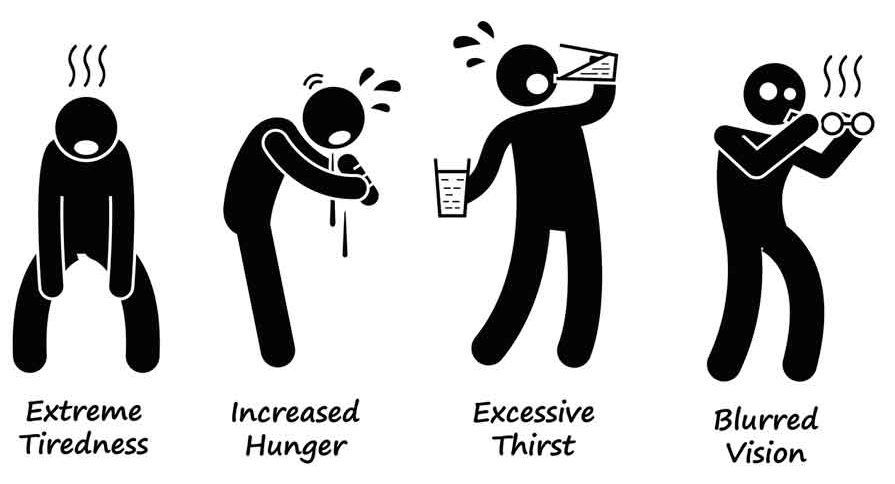What Is Prediabetes?

More than a third of all Americans have blood sugar levels that put them at high risk of getting diabetes. If the results of a test called A1C test are 5.7 to 6.3, you have prediabetes.
When your doctor tells you that your blood sugar is too high but you’re not quite diabetic — you’re pre-diabetic — you probably won’t be having any symptoms.
Even about 40 percent of Americans with full-fledged diabetes don't realize they have the condition.
You might think — I’m not sick, why worry? Here’s why: Too much glucose over time can lead to nerve damage, lowered resistance to infection, and heart and kidney disease.
Yet, there are simple steps you can take early for maximum effect. Let a diagnosis of prediabetes inspire you to take care of yourself. Losing as little as 5 to 7 percent of your body weight could bring your blood sugar levels down.
YOU MIGHT ALSO LIKE: What Causes Diabetes?
Who is at risk for prediabetes?
More than one out of three Americans falls into the prediabetes danger zone. If you haven’t had a checkup, take an online screening quiz to see your risk here. You can also buy an at-home test at major drugstores for $40 or less.
People over the age of 45 with extra weight are at more risk, as are African-Americans, Asian Americans, and Latinos. So are women with polycystic ovary sydrome or those who had gestational diabetes.
You might already be exercising regularly and maintaining a healthy weight but be vulnerable because of your genetics. If your parent or sibling has type 2 diabetes, you are more at risk.
What is prediabetes?
It means you fell into a high-risk category according to one of three tests of blood sugar. The A1C test (which you can get online or at a lab) measures your average blood sugar level over the past 2 or 3 months. An A1C below 5.7 percent is normal. If it falls between 5.7 and 6.4 percent you have prediabetes. Diabetes begins at 6.5 percent.
Another approach is to measure your blood sugar after an overnight fast. It should be 99 mg/dL or less. From 100 to 125 mg/dL is the prediabetic range. From 126 ml/dl on up indicates diabetes.
In the glucose tolerance test, you’ll fast overnight and give blood, then drink a liquid and have your blood checked at one, two, and three hours. At 2 hours, a blood sugar level of 140 mg/dL or lower is considered normal, 140 to 199 mg/dL is defined as diabetic, and 200 mg/dL or higher diabetic.
Some people may have a normal fasting glucose test but a simultaneous A1C test in the prediabetes range. Very hot or humid weather, high altitudes, and anemia can affect your blood sugar levels.
You can also test your blood at any time using an over-the-counter diabetes meter, perhaps owned by a friend. If your blood sugar is 200 mg/dL or higher, you have diabetes.
| Result | A1C Test | Fasting Blood Sugar Test | Glucose Tolerance Test | Random Blood Sugar Test |
| Diabetes | 6.5% or above | 126 mg/dL or above | 200 mg/dL or above | 200 mg/dL or above |
| Prediabetes | 5.7 - 6.4% | 100 - 125 mg/dL | 140 - 199 mg/dL | N/A |
| Normal | Below 5.7% | 99 mg/dL or below | 140 mg/dL or below | N/A |
*Results for gestational diabetes can differ. Ask your healthcare provider what your results mean if you’re being tested for gestational diabetes. Source: American Diabetes Association
If you may have type 1 diabetes — when your pancreas produces little or no insulin — your doctor will also check for autoantibodies and test your urine for ketones.
What are the signs of diabetes?
Some early signs include: urinating frequently, unusual hunger or thirst, fatigue despite enough sleep, blurry vision, numbness or tingling in your hands or feet, dry skin, slow-healing sores, and frequent infections.
Get support for success
We all feel better when we up our health game with enough exercise, sleep, social connection, and a healthful diet. For details and support, look for an online or in-person group approved by the National Diabetes Prevention Program. During the first six months of the program, you will meet weekly in a group with a trained coach. For the next six months, you’ll meet once or twice a month to maintain the changes you’ve made.
YOU MIGHT ALSO LIKE: Losing Weight Can Reverse Type 2 Diabetes
Updated:
July 13, 2020
Reviewed By:
Janet O'Dell, RN